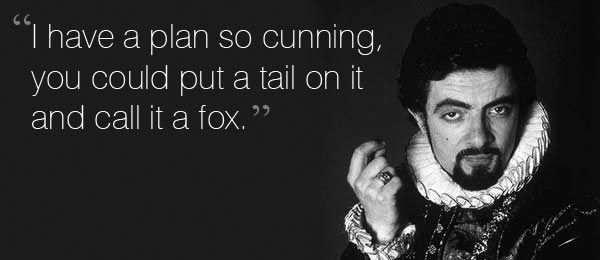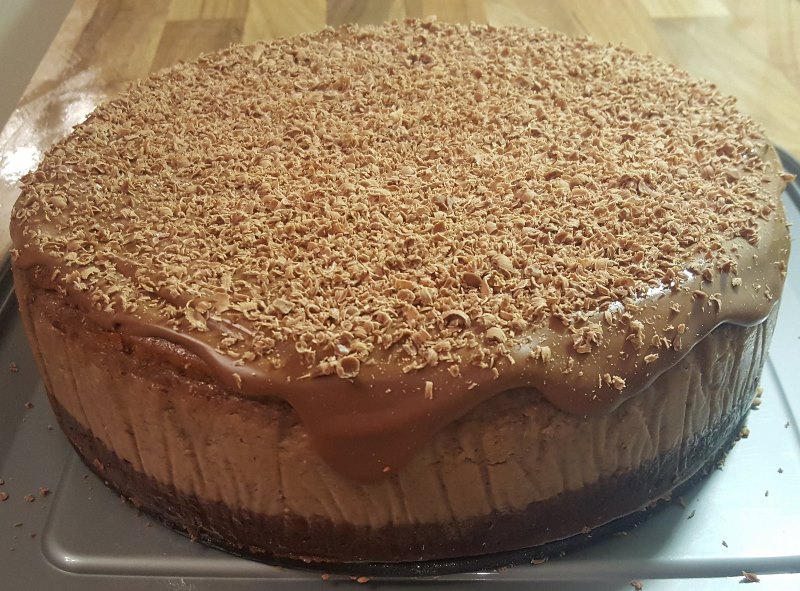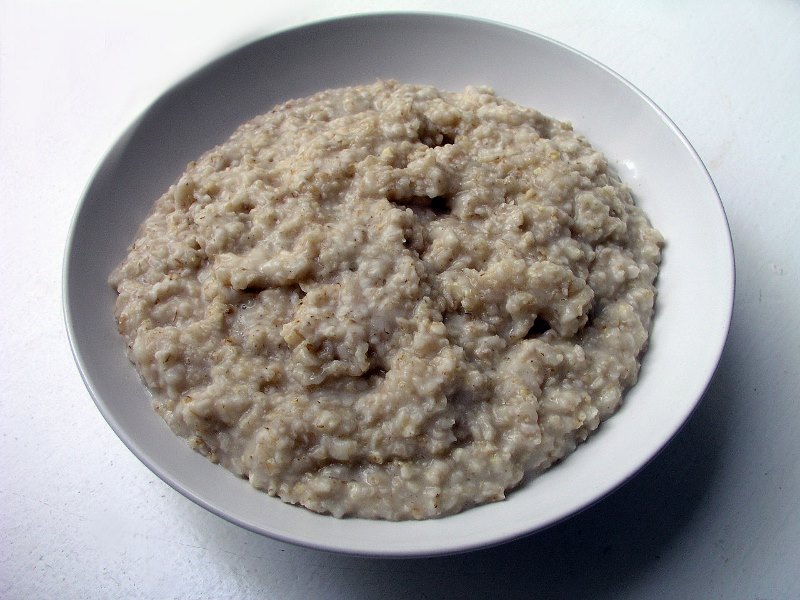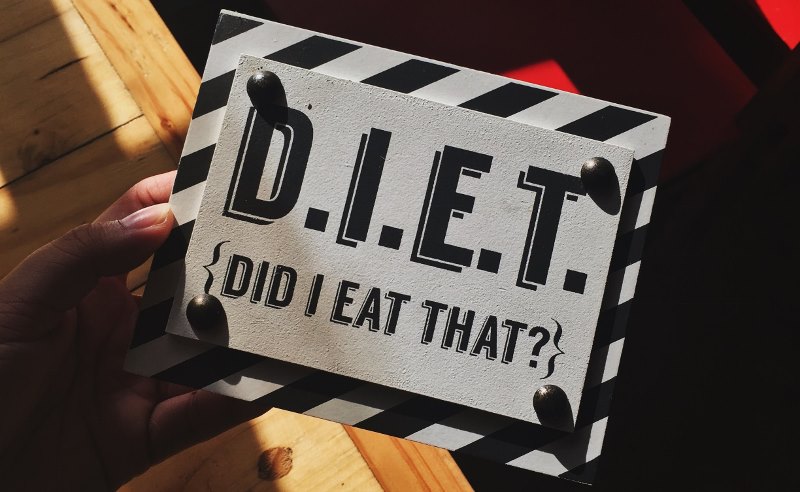Like most people, after most Christmases, I tend to start the New Year with a weight loss diet plan. In my case, a diet plan tends to start off quite well, lose momentum by the end of January and then fizzle out around Valentine’s Day. So, this year, I thought I’d do something different; I thought I’d blog about my progress, in an effort to keep me on the straight and narrow.
My weight loss diet plan actually started on Friday, December 28th. A truly awful day to start a diet plan but I really wanted to make sure I gave this one everything. In the hope it might be the last diet plan I ever do. The idea was to post photos of my pale, flabby body, as extra incentive to stick to the weight loss diet plan…
And then Vance happened!
For those who don’t know, Vance Hinds is an American chap who has, literally, transformed himself in the space of a single year. The guy is awesome, and an inspiration, and his YouTube video is well worth a watch:
In 365 days, Vance went from 475 lb (33 st 13 lb/215 kg) to 277 lb (19 st 11 lb/126 kg) A total weight loss of 198 lb (14 st 2 lb/90 kg). In essence, in one, short year, Vance lost the equivalent of an overweight man. How much of a testament this is to Vance’s courage, willpower and determination cannot be overstated. He’s worked wonders.
However…
This does leave me with a slight quandary regarding my own project. You see, it’s hard to expect any level of interest and support when my starting weight is virtually exactly the same as Vance’s finishing weight. Additionally, the dream weight that I might achieve is around 14 stone… and that’s how much weight Vance lost in a year. Thanks, Vance!
Fortunately, though, it’s not a competition. Plus, I post half naked images of my pale, flabby body all the time. The only difference here is that there won’t be any tubes sticking out of me in these photos. Which is why I’ve decided: sod it, I’ll do it anyway.
Because it’s part of a larger plan…

I turn 49 this year, which means I’ll be 50 next year. And Wales has an Over-50s international hockey team, for which I would qualify (what with my dad being Welsh, and all). I used to be a pretty skilful player, when I was younger. And, while I’ve never stopped playing hockey, my technique seems to have gone the same place as my fitness, which is to say: away.
So, I reckon if I can bring down my weight and work on my fitness in 2019, I can focus on my stick skills in 2020 and boom! When I turn 50, I’m in with a chance of international hockey…
Genius! What could possibly go wrong?
Well, my history of weight loss diet plans is the main problem. I’ve started so many diet plans that I’ve lost count. And only one ever got me back below 16 stone (224 lb/101 kg), and that was probably getting on for 20 years ago. Which is a lot of unsuccessful diet plans.
And I do know that I shouldn’t be trying to diet, I should simply introduce a ‘lifestyle change’. But, for the most part, the reality is that for someone heavily overweight, the only difference between a ‘diet’ and a ‘lifestyle change’ is the spelling.
The process of losing weight is simple. You expend more calories than you consume each day, and weight loss happens. The number of times that this process is thinsplained to overweight people is frustrating. Yes, that’s right; I’ve completely ripped off ‘mansplained’. I’m not sorry at all and I’d do it again in a heartbeat.
Just to be clear; many of us have struggled with weight loss for a very long time. Having someone who has never struggled with their weight, explain the principles of losing weight to someone who is struggling with their weight, is exactly as annoying as it sounds.
In actual fact, as anyone who has been on a long enough diet plan will tell you, you reach a point, or a series of points, where the rules change. You know you’re consuming fewer calories than you’re burning but, for weeks, your weight doesn’t fall. Sometimes it actually goes up a pound or two. This is known as the weight loss plateau.
The weight loss plateau, too, is something that people who have never struggled with their weight can’t get to grips with. They will ridicule the concept and accuse you of extra eating. Which is about as helpful as passing an anvil to a drowning man. In actual fact, the weight loss plateau is so real, that the NHS has produced a guide offering tips on how to get past it. The weight loss plateau is real and, it’s soul destroying. Many a successful diet plan has ended because of a weight loss plateau.
The thing about diet plans is that if you try and lose weight too quickly, to the point that the calorie deficit is too high, your body thinks it’s starving. When the body thinks it’s staving, it starts breaking down muscle instead of fat. To be fair, most diets involve some loss of muscle tissue, it’s just when you’re in starvation mode the body really focuses on muscle tissue. And you don’t want to lose muscle tissue, because muscles burn calories, just by being there, in a way that fat does not. Which is why it’s important to exercise while you’re dieting: to counteract the loss of this muscle tissue.

Photo by rawpixel on Unsplash
A loss of muscle tissue results in a lowering of your metabolism. A lower metabolism means that your body needs fewer calories to maintain itself. As such, the calories that were low enough to help you diet, no longer are. There are only the same two ways out of this:
- Further reduce your intake of calories
- Further increase your amount of exercise
Both of these will replace the calorific imbalance that you’re after. But both of them can also lead to that most dreaded aspect of dieting: hunger. And I don’t mean the, ‘Oh, I feel peckish’, type of hunger. I mean the, ‘I can’t get to sleep because I’m so hungry’, type of hunger.
In my case, it is hunger, more than anything else, that will end a diet plan. When hunger is combined with a weight loss plateau, I’m pretty well done.
Fat people are often called, ‘salad dodgers‘. And, in my case, this couldn’t be more accurate. I have no interest in salads and the majority of vegetables. I wish I did, but I don’t. Julie does. She enjoys eating fruit, salad and vegetables in a way I neither share nor understand. Which is a real shame, because getting some sort of reward out of eating this crap would make my life so much easier.
My particular failing is my sweet tooth. I love both baking and eating all sorts of cakes, pastries and desserts. I’m actually reasonably good at the baking side of things. But the things that I actually get pleasure from eating are wall-to-wall calories. It’s not ideal!

Again, people with a sweet tooth are told just to stop eating cakes and to eat fruit and vegetables instead. But, to me, fruit and vegetables are boring and uninspiring. And, sure, I can make myself eat them, as part of a diet plan. But a lifestyle change that involves eating things that I have no interest in, for the rest of my life, is a difficult concept to embrace.
And in an ideal world, at the end of a successful weight loss diet plan, you’ve reached the point where you feel fit and healthy and are getting plenty of exercise. At which time, you can include all those sweet treats you used to enjoy, as part of a balanced, healthy diet. Except can you really? If you haven’t eaten anything sweet for a long time, you can persuade yourself that something like a mango is actually quite sweet. But have a couple of slices of cheesecake, over the course of a week, and see how sweet that mango appears now… It’s a slippery slope that’s probably impossible to explain or understand, unless you’ve been there.
But I’m getting ahead of myself. Right now I need to work out a diet plan that I can do this time that will, eventually, give me the luxury of worrying about maintaining all that wonderful weight loss.
And my answer is: porridge!
Or, oatmeal, if you’re in the U.S.
Historically, I’ve achieved my best diet results when on the Weight Watchers Diet (WW). But I’ve done WW so often that I no longer need to be signed up to it to know what I’m allowed to eat. Besides, it’s only really a short term fix. Each day, I have the meals that I know that I’m allowed and, in time, I lose weight. But, during this process, I’m hungry most of the time. Eventually I hit a plateau and cave, and then the weight piles back on.
Last November, while actually not actually on a diet, I saw something on YouTube about oatmeal and, decided to watch it:
It seemed like oatmeal could be the perfect solution. It also sounded too good to be true, so I watched another:
This seemed to reinforce the point, so I did a Google search, and the information on the videos were backed up by sites like Livestrong.
Basically, porridge is relatively low calorie but incredibly filling. When I’m on WW, each day I include one meal of sandwiches and one meal of cereal; the other is a larger, healthy meal, which acts as my main meal of the day. What would happen, I wondered, if I replaced the sandwich and cereal meals with porridge and kept the main meal the same?
So, towards the end of November, I did just that. And, you know what? It worked! I was losing weight, and I wasn’t hungry…
Emboldened by these results, I decided to stick to my porridge diet in the run up to Christmas and then restart on New Year’s Day. Inevitably, all the baking and cooking in preparation of the Lewis Christmas won in the end, and the porridge took a back-seat for a while. But I did manage to get back to it early, and I resumed my porridge diet on December 28th. Initially, with only one bowl of porridge a day, because nothing comes between me and my turkey sandwiches. But, as soon as I ran out of turkey; two bowls of porridge a day, one either side of the evening meal.
On New Year’s Day, I also introduced exercise. I took Julie and the girls up on the hills for a four(ish) mile hike. And, since then, I’ve walked a three-mile route every day. This introduction of exercise has, sadly, reintroduced the spectre of hunger. But there’s a reason for this: each walk, according to my fitness watch, burns in the region of 500 calories.
Which is perfect. Exactly what I want. It takes 3,500 calories to burn a pound of fat. 500 calories burned from exercise, each day of the week, adds up to 3,500 calories. Which means I’ll lose a pound a week from exercise. If I then also reduce my daily calorific intake to 500 calories below what my body needs; that’s another pound a week, right there. Just doing this would mean I’d lose two pounds a week. And, this time next year, I’d be 100 pounds lighter; weighing in at 177 lb (12 st 9 lb/80 kg).
Not that I actually want to get that low. At 12 st 9 lb, anyone who knew me would think I was ill. Let’s just dream of 14 st first, and see what that feels like.
If I want to have a 500 calorie a day deficit, I need to know how many calories I’m eating. Which means measuring the calories in my porridge. For me, a meal of porridge involves:
- 60 g porridge oats (218 cal)
- 360 g semi skimmed milk (180 cal)
- 24 g sultanas or dried cherries (72 cal or 79 cal)
- 15 g honey (49 cal)

By Nillerdk – Own work, CC BY 3.0, https://commons.wikimedia.org/w/index.php?curid=4070068
I typically have sultanas in my morning porridge and cherries in my evening porridge so, between them, my two meals of porridge provide me with 1,045 calories each day.
I also have a Fruit Pastille lolly each day, at 57 calories, and, quite often, start the day with a mocha, at about 100 calories. This, together with the porridge, brings my daily consumption to 1,200 calories. If I assume that my evening meals average around 1,000 calories per day, this brings my daily calorific intake up to 2,200.
Which might seem a lot.
Except that I’m 270 pounds…
One of the most vital things to understand about weight loss diet plans is that we’re all different. What might work for one person might not work for someone else. This is largely because we each have a specific number of calories that we need to consume, just to keep us warm and breathing. This level is known as the Basal Metabolic Rate (BMR). Your BMR depends on a number of factors, including:
- Your age
- Your gender
- Your height
- Your weight
Which is all fine and dandy, but isn’t actually that useful until you add in one more factor:
- Your activity levels.
Once you know your BMR and you activity levels, you can work out exactly how many calories you need to consume to either maintain your weight or to lose weight.
Not that you have to work this out for yourself; there are calculators to do it for you: Calorie Calculator.
On investigation, my BMR, the number of calories I would burn if I simply lay in bed all day, is 2,149. This is almost exactly what I’m my current porridge based diet plan has me on.
In reality, though, I’m exercising every day, which marks me as ‘active’ on the calorie calculator. In order to maintain my current weight of 270 lb, while walking three miles every day, I would need to consume 3,330 calories each day.
In order to partake in, what the calorie calculator describes as ‘extreme’ weight loss, to the sum of 2 lb a week, I can consume no more than 2,330 calories per day. Which my current eating plan puts me a couple of hundred calories the right side of. There’s even room for a couple of oranges each day, to stave off the hunger pangs.
The trick to avoiding the dreaded weight loss plateau, is to make frequent use of this calorie calculator. By the time I get down to 250 lb in weight, the ‘active’ calorie allowance will have dropped to 2,190, which is below what I’m eating. Which means I won’t be losing weight any more.

My solution is to shift my porridge intake in line with my weight. My meal size is based on 60 g of porridge, because this was one and a half times the suggested meal size; which usually works for me, at this weight.
[Sidebar – This next sentence was originally going to go into detail about the ratios I use to calculate reducing my meal size. That was horrifying, so I’ve moved that to the bottom, if you want to check it out.]Suffice it to say: as you lose weight, reduce the amount of porridge you eat in each meal. This reduction of meal size will become important in time, but; not yet. Not yet!
For now, it’s all about getting my walks in. They’re time consuming but low impact on the knees. And that’s important, because I’ve got another half of a hockey season to get through. And, much as I love my hockey; it really gets in the way of a diet. The high intensity of the hockey match is a real drain on my energy. The resulting hunger lasts all day Saturday and most of Sunday. It’s not easy to maintain a diet in the face of that. Additionally, it puts a strain on my joints, particularly my knees. And, when you’re dieting, pulls, sprains and strains take that much longer to heal, because your body simply doesn’t have the energy to spare.
Even worse, your brain accounts for 20% of the energy you consume. If you don’t have enough calories on board, it’s literally harder to think…!
But, the plan for this month is to stick to a diet plan that includes two bowls of porridge each day. I’ll also walk every day for the first two weeks (except the days that involve, hockey; when I’ll do hockey). After those two weeks are up, the hockey season will restart properly, with training on Thursdays and matches on Saturdays. At which point, walking every day will do my knees in. So I’ll switch to weight training a couple of times a week and, maybe, cycling a couple of days a week…
I’ll see how it goes and report back on the first Friday of February.
Arithmetic Notes:
Dividing my weight (270) by the grams of porridge I eat (60) gives a ratio of 4.5. Whatever my weight is in pounds, I’ll divide the number by 4.5 and have that many grams of porridge. So, at 250 lb, I’ll be having 56 g of porridge.
I’ll also reduce the other ingredients in line with this, along the following principles:
- The milk will be six times the weight of the porridge
- The dried fruit will be 40% of the weight of the porridge
- The honey will be 25% of the weight of the porridge
In this way, I keep the proportions the same but reduce the amount I consume. And the calories involved.
